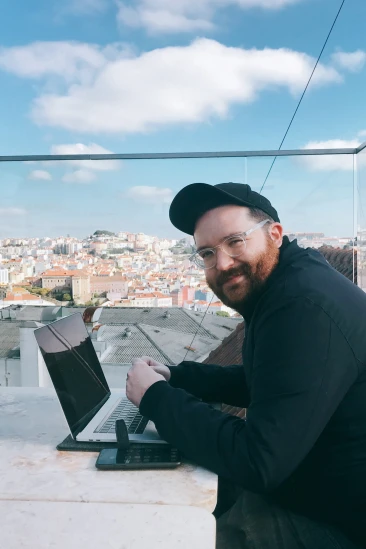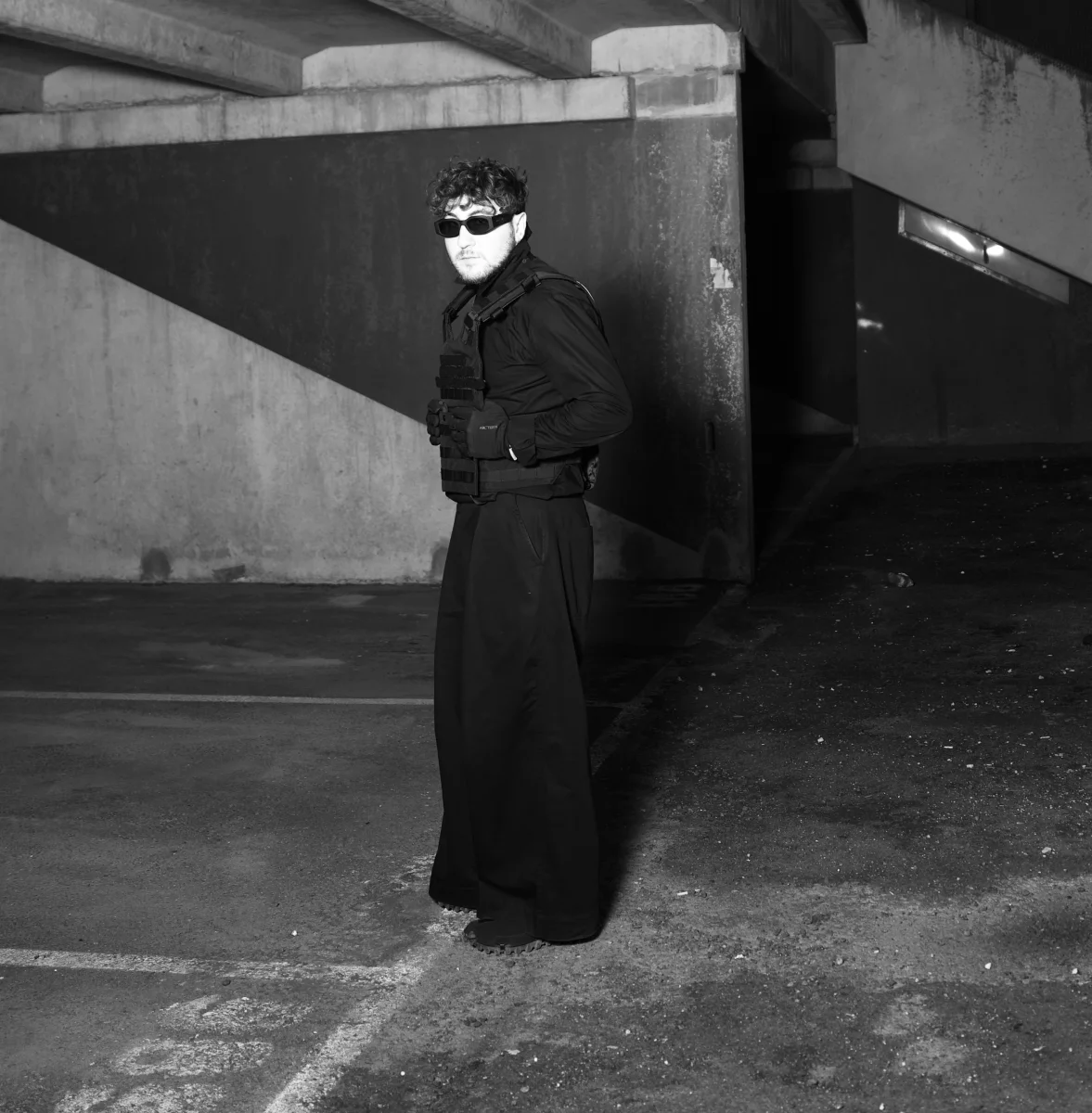What led you into design?
My background might suggest a different career—my mother a trained nurse, my father a tax accountant with a large law firm, my grandfather a house painter. Design did not play a special role in my immediate environment, but I have always been very interested in art, especially photography.
I liked to collage pictures and tinker with different materials. I created my first digital artwork on my older sister’s computer and fell in love with the animations of PowerPoint presentations. When I was 12 years old, I designed my own magazine—print run 2 copies—together with my best friend.
At that time, we even adopted a secret script in which the individual letters were replaced by fantasy glyphs. Only we could read the texts. Maybe that was the real spark to become a graphic designer. But to be honest, I didn't really know what to expect with the study program I chose.
But fortunately, it was exactly this variety that was offered to me, and especially the people I met during my studies, through which I was able to find my way.
What does a typical day look like?
I get up at 7, get my son and I ready while my husband prepares breakfast. The kindergarten is on my way to work, and I'm in the office by 9.
In the morning, I usually make a lot of phone calls and write emails, direct my employees and take care of ongoing projects. We typically cook and eat together, and I really enjoy this time because you get closer as a team and get to know each other better.
The afternoon is often similar, although the tasks can be very different. At 4:30 pm, I am back at the kindergarten and enjoying family time. When the little one is asleep in the evening, I work a few more hours in a relaxed atmosphere at home.
What's your workstation setup?
Where do you go to get inspired?
Very different. Often when travelling, when you are not in your usual environment, but I also feel inspired by nature, materials, dreams.
What product have you recently seen that made you think this is great design?
A caravan from the company Lume from the Netherlands. I have always wondered why most caravans are only functional, but not well-designed. With this one, both go hand in hand—it would be nice if that comes not only in the luxury segment, but also in the broader mass.


What pieces of work are you most proud of?
Certainly Slanted Magazine, it has opened so many doors for us and made so many other projects possible. It's a very personal project because, especially in the issues dedicated to a particular place, we reflect very personal impressions of a particular city.
We are usually on location for 1-2 weeks and meet designers, typographers, photographers, illustrators, artists and other creative people in their studios and ateliers. These interviews, which are created there, are contemporary witnesses and meanwhile represent an invaluable archive.


What design challenges do you face at your company?
I sometimes find it difficult to create something “new.” Our focus is definitely on a very typography-heavy graphic design. And certainly, over the many years of our work, we have found a certain language through which we communicate visually.
It’s a fine line to stay true to this and at the same time to dare and experiment with new things. But I also have to say that I rarely really work hands-on on the projects myself, and my field of responsibility is much larger than what I originally learned and have.
What music do you listen to while designing?
Any advice for ambitious designers?
Work harder and don’t give up so easily.
Anything you want to promote or plug?
Sure, our website where we publish daily news from the international design scene and give insights into our work. Moreover, you can find the mentioned video archive there as well as a big design marketplace with publications and products from all over the world.












